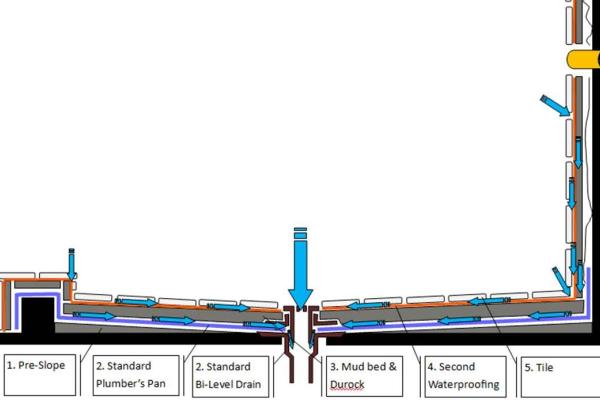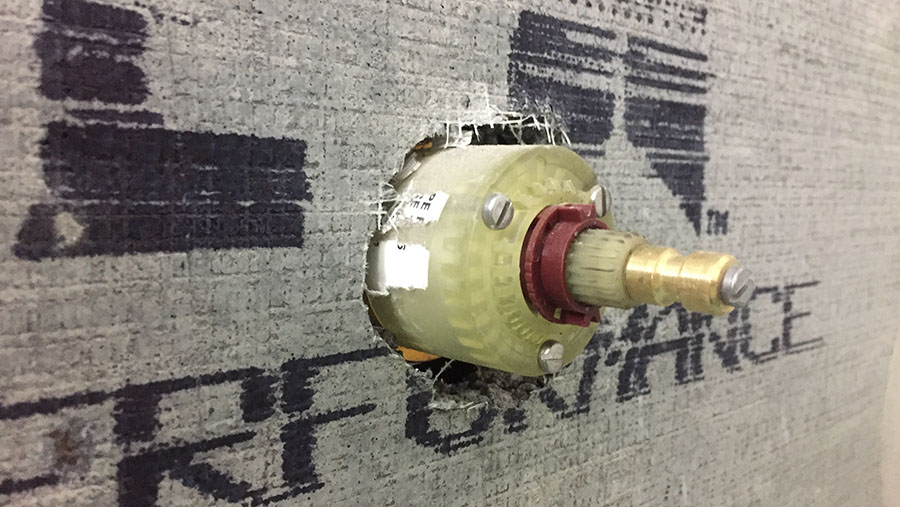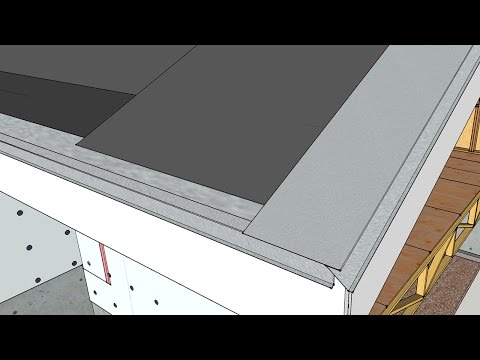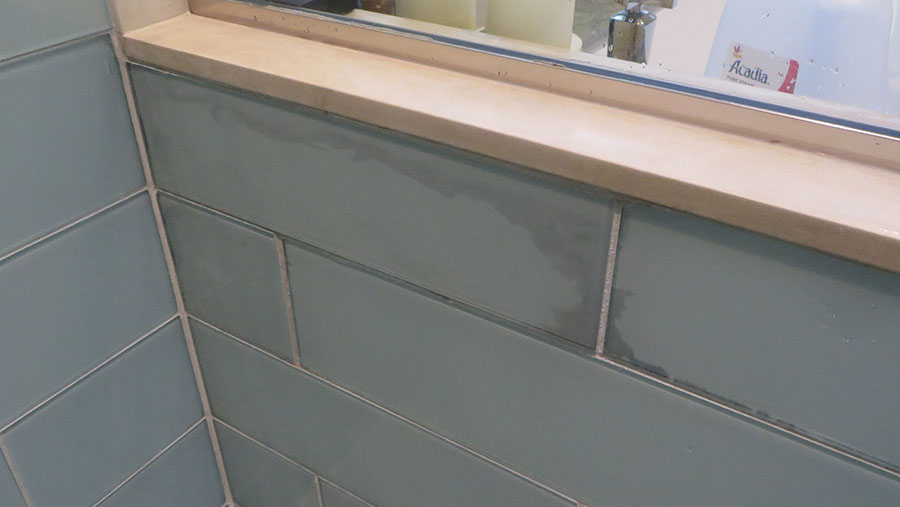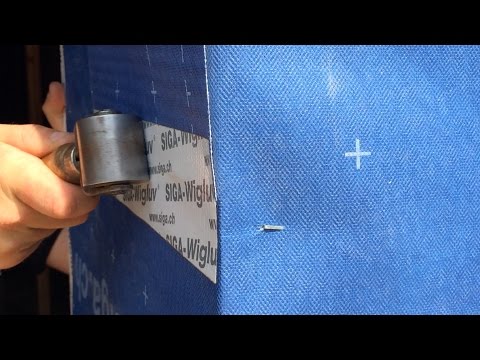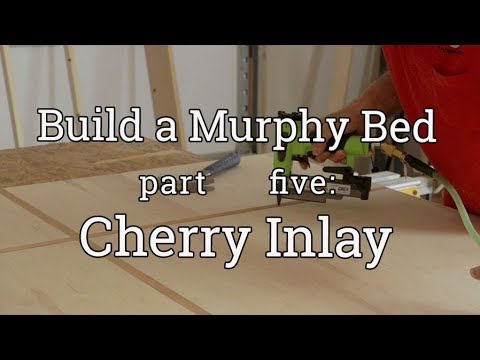All complex assemblies involving multiple trades demand the critical, and constant, focus of supervisors. Where one trade ends and another begins must show continuity. If you do not build redundancy into the system, you are building in risk.
EDITOR'S NOTE: The article below is an edited transcript of a key part of the video above.
The monthly training meeting for BOWA supervisors covered shower waterproofing best practices. A deep topic with a surprising number of callback problems. BOWA has made a lot of money fixing other people's problems and lost a little money fixing their own.
All this experience is boiled into this best practice session, which Doug Horgan presents to his team, and we present to you. We are presenting it in pieces. Last week we looked at weak links in the water proofing process, this week we look at the best practice solutions.
"It rains like twice per week outside and twice per day inside."
—Doug Horgan, VP of Best Practices, BOWA
Where one trade ends and the next one begins must include an overlap instead of a gap. Water flows into gaps and energy leaks out of them.
But even beyond successful hand offs between subtrades, individual trade craftspeeps must understand their scope, their piece of the bigger picture, and the best practices of their trade.
To follow along with the video, start at 8:52.
The BOWA Best Practice Shower Standard
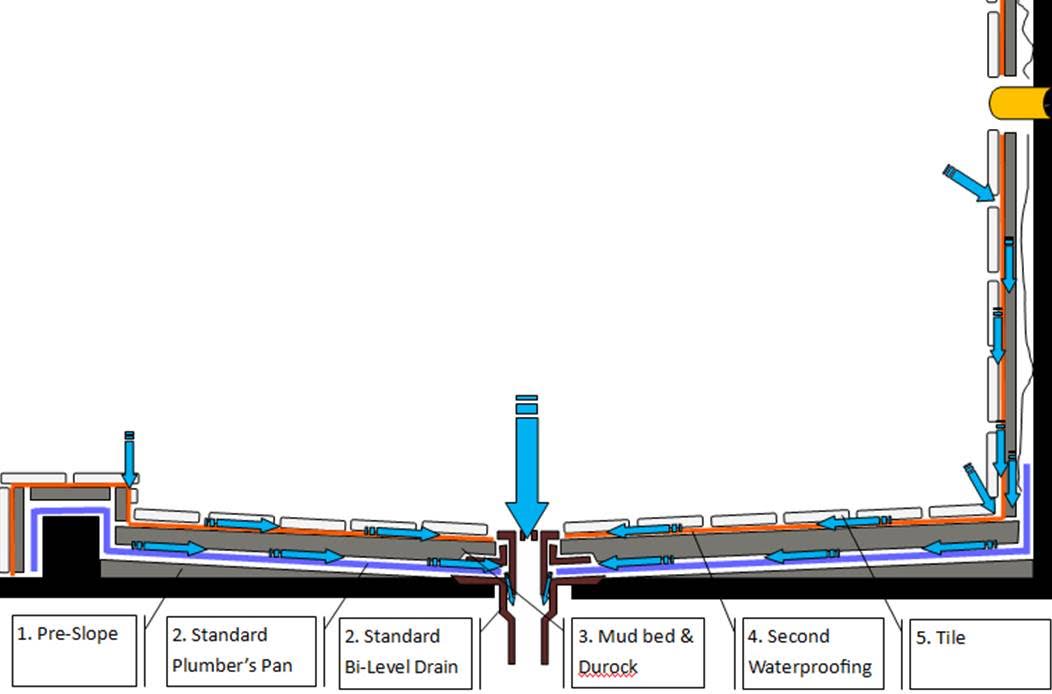
Established as a collaboration with Guy Buttaro, owner of GLB Tile and Marble, this has been our standard for traditional bi-level drain and plumber’s pan. Single-layer waterproofing systems like Kerdi are also excellent and we use them more and more. This guide focuses on off-the-shelf materials.
BOWA's Best Practice System has five layers—two are for moisture protection.
- Slope floor under shower
- Plumber's pan and drain, WRB behind wallboard.
- Mud floor, Durock walls
- Second waterproofing on flats and down to floor
- Tile and grout
1. Slope the floor
This used to be done with sand, and it is still in the TCNA handbook. You can also use plywood, we typically call the tile people to put a mud bed sloped to the drain before we get going. It is not structural, but it must be non compressible.
You can use shims and glue to slope plywood—not in the book, but it works.
2. Backup waterproof layer under mud and behind the board
Use a plumber's pan and drain to encapsulate the shower floor. This is the last line of defense. If water gets through this, you are going to have a problem.
A WRB behind the cement wallboard does the same job up the walls.
Half of our tile people install the plumbers pan (rather than the plumber) because they want to make sure it is neatly installed, exactly the way they want it.
The critical connection in the plumber's pan is the big hole in the center where the drain goes. The correct drain is called a bi-level drain, and it has four pieces:
- Drain body
- Clamp ring
- Beauty ring
- Grate
The plumbers pan is clamped between the drain body and the clamp ring. The beauty ring is installed up to the level of the tile, and the grate pops into the beauty ring.
The directions that come with the drain usually say to glue the drain body to the bottom of the pan. This step is often omitted, and it usually doesn't cause any issues because the clamp ring usually seals the joint. Because it is in the directions, we require it.
But do not get overzealous with the glue, however. Glue the bottom of the membrane to the drain body only. Do NOT glue the top of the membrane to the clamp ring—or you may seal the weep holes which allow water to drain from the pan, through the ring, into the drain.
Other key vulnerable spots in a plumber's pan are corners and seams
If the shower is wider than the pan material, there will need to be a seam. To seam it, use the appropriate glue for the material and the job. On the corners of curbs, shelves, and benches, use preformed corner patches, available in plumbing and tile supply shops.
If there are four corners, use four corner patches.
Vinyl shower pans come from rigid material that has a lot of plasticizers added to make it flexible. We are concerned that over the years, the plasticizers can off-gas, leaving the pan rigid, and potentially brittle. At least that is what we think, and for that reason we are considering upgrading to a CPE (Chlorinated Polyethylene) shower pan liner such as Noble Chloraloy.
Protect the pan from knuckle-draggers
With the pan installed and holding water, it is important to keep it water tight through the construction process. One way is to protect the membrane with foam board. This is fast and effective. Another way is to leave the water in the pan and add crime scene tape. Unfortunately, some drywall contractors walk on stilts and are not scared off by water.
The best way may just be to get the tile people in to lay the mortar bed as soon as you pass the flood test.
Water-manage the walls
Provide a backup layer behind the cement board for emergency drainage. The Tile Council of North America specifies 'membrane' fastened to the studs. Many read this as 'plastic' and others read it as felt. Felt is probably slightly better for exterior walls in our climate: mixed climate with both heating and air conditioning.
The 'membrane' is tucked into the shower pan. It should go at least as high as the shower head.
3. Mud floor, CBU walls
Materials choices for concrete backer board:
- Cementitious Backer board Units (CBU’s): Durock, Permabase, Wonder Board: yes.
- Wood-fiber cement board: HardiBacker? Maybe.
- Gypsum tile backer: Not for us. Take a close read of the installation instructions and see if you believe your installers can follow them as written.
No fasteners in the wall below two inches above the curb. The shower should be allowed to fill up an inch or two without putting the walls in jeopardy.
4. Second waterproofing on flats and down to floor
Secondary water proofing has probably save us $100,000 over the years. We use sheet membranes, like Schluter Kerdi or Laticrete Hydro-Ban Sheet in key trouble spots:
- Curbs
- Benches
- Half-walls
- Niches
Run the membrane from the trouble spot, all the way to the floor. Corner pieces matter too
These thin sheets transition to the drywall nicely too because the sheet acts like drywall tape.
Other materials that work well, too:
- Laticrete
- Noble
- Durock membrane
- Liquid: More work than sheet membranes, longer process. Tempting to shortcut. These are good materials when used properly—and some tile contractors really do all the steps—but half the time installers do not realize how many steps and extra days fluid-applied systems require. Read the directions.
5. Tile and grout (30:24)
Most waterproofing problems occur before the tile and grout is installed, within the layers above. There are, however a few things worth noting in this last layer.
- Never use mastic or premixed thin set; Always use site-mixed thin set mortar: Dry mixed powder that you added water to, that then turns to cement through a chemical reaction, and it never turns back. Premixed 'thinset' is water-based, so it dries through evaporation. When it gets wet again, it turns to mush and tiles pop off the walls.
- Full coverage on back of tile. Most tile people know this, but it is worth saying.
- Smoosh grout into the joints. Again, most of you knew this.
Other systems
As mentioned above, there are manufacturers' systems that do not require a double waterproofing method like this, such as Schluter/Kerdi showers. The main differences are that there is no plumbers pan, and a special single-level drain.
-
Like: Fast and effective
- Dislike: Must be perfect, no redundancy
- Two keys to Kerdi: two inch overlap everywhere it overlaps—corners, outside shower curbs, joints between sheets, and run the sheet from the drain to above the shower heads.
Previously in this series we looked at weak links in the water proofing process. Next week we will cover some Advanced Shower Topics, like slot drains, valves, and roll-in showers.
—Doug Horgan is a Vice President of BOWA, a Design, Build, Remodel, and Consultation company with offices in McLean and Middleburg, Virginia. Doug is also one of ProTradeCraft's technical advisors.
